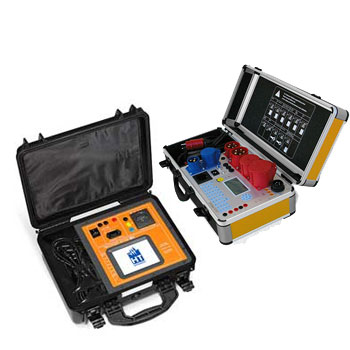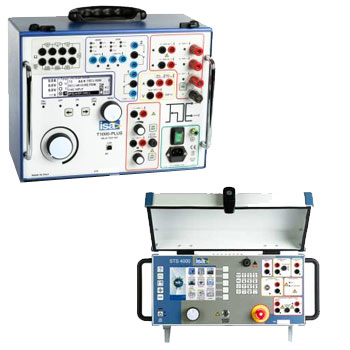The differential pressure transmitter IDPT 100 has been especially designed for fast test processes in leakage and flow measurement, where a fast response time and high sampling rate are necessary.
 Datasheet Datasheet |
 User Manual User Manual |
The digital "high performance" pressure transmitter which features remote safety handling and is ready for digitalization - developed according to IEC61508 standards for SIL2/3. Accuracy: 0,04 %

 Datasheet Datasheet |
 User Manual User Manual |
The SITRANS P300 offers measuring precision and ruggedness. Its stainless steel housing with laser-printed nameplate, together with a wide range of hygienic process connections, mean that it is highly suitable for use in the food & beverages industry as well as for pharmaceutical processes.
 Datasheet Datasheet
|
 User Manual User Manual
|
- Multi-functional display
- Simple menu navigation
- Conductive plastic case
- Large LC display, rotatable
- Approvals for hazardous areas


 Datasheet Datasheet |
 User Manual User Manual |
- High measurement accuracy
- Freely scalable measuring ranges
- Developed in accordance with the SIL 2 requirements
- Seven different case variants
- Configuration via DTM (Device Type Manager) in accordance with the FDT (Field Device Tool) concept (e.g. PACTware™)



 Datasheet Datasheet |
 User Manual User Manual |
 User Manual User Manual |
 User Manual User Manual |
Process engineering | Chemical industry | Petrochemical industry

 Datasheet Datasheet
|
 User Manual User Manual
|
 User Manual User Manual
|
 User Manual User Manual
|
especially designed for the process industry, can be used for level measurement of closed, pressurized tanks, pump or filter controlling, etc.

 Datasheet Datasheet |
 User Manual User Manual |
 User Manual (Ex) User Manual (Ex) |
The digital pressure transmitter which features remote safety handling - developed according to IEC61508 standards for SIL2/3. Accuracy: 0,065 %

 Datasheet Datasheet
|
 User Manual User Manual
|

Process Transmitters – Precise Signal Conversion for Pressure, Δp, Level & Temperature
Process transmitters convert physical variables such as pressure, differential pressure, level and temperature into standardized signals (4–20 mA, HART, Profibus PA, Foundation Fieldbus, Modbus/RS-485 or Ethernet). They offer high accuracy, long-term stability, diagnostics (NE107) and options such as SIL, ATEX/IECEx, local display, diaphragm/remote seals and valve manifolds.
ICS Schneider Messtechnik supports you with selection, material & membrane choice, rangeability/turndown, installation & impulse lines, calibration, and—on request—IIoT integration via edge gateways into SCADA/cloud (MQTT/HTTPS).
FAQ on Process Transmitters
Answers to common questions on signals, accuracy, turndown, installation, sealing/materials, Δp applications, safety, calibration and digitization.
Which output signals are typically available?
| Signal | Advantages | Notes |
|---|---|---|
| 4–20 mA (2-wire) | Robust, process industry standard | Consider line drop; loop supply required |
| HART | Parametrization/diagnostics superimposed on 4–20 mA | Requires HART modem/handheld |
| Profibus PA / FF | Full fieldbus integration | Plan segment power/topology |
| Modbus RTU (RS-485) | Many variables, cost-effective | Ensure biasing/termination |
| Ethernet (Modbus TCP/HTTP) | Fast IT/edge integration | Mind cybersecurity/segmentation |
How do I calculate the allowable loop load for 4–20 mA?
Maximum load Rmax depends on supply U and transmitter headroom Umin: R_max = (U - U_min) / 0.02 A. Example: 24 V with 12 V headroom → Rmax = 600 Ω (include cable resistance and HART resistor).
What is turndown/rangeability?
Turndown is the ratio of nominal span to configured span (e.g., 100:1). Large turndown increases flexibility but can shift the relative error band—check the datasheet.
How is overall accuracy defined?
| Component | Contribution |
|---|---|
| Base accuracy | ±x % of reading/span |
| Temp. effect (TEB) | ±x % over specified temperature |
| Long-term drift | ±x % per year |
| Static pressure effect | Relevant for Δp/remote seals |
What are key installation tips for pressure transmitters?
- Low-vibration mounting; provide vents/drains
- With steam: use siphon/cooling element
- Snubber/restrictor against pressure spikes
- Mount the display for optimal orientation
When do I need a diaphragm seal or remote seals?
For hot, viscous, crystallizing, sticky or corrosive media, and in hygienic applications (flush, CIP/SIP). Remote seals with capillaries allow offset mounting and thermal decoupling.
What matters for differential pressure (Δp) transmitters?
- Equal-length impulse lines; vent/drain correctly
- Use 2/3/5-valve manifolds for safe commissioning/zeroing
- Minimize static pressure effects and temperature gradients
How do I choose membrane/fill fluid (remote seals)?
By medium/temperature: 316L, Hastelloy®, Tantalum; fill fluids e.g., silicone oil, Halocarbon (oxygen), food-grade oils. Consider viscosity/temperature range and response time.
What IP ratings and materials are common?
Housings IP65–IP68/69K, stainless steel 316L or die-cast aluminum; process connections G/NPT/flange; hygienic (Tri-Clamp/Varivent®) with diaphragm seals.
How do I parameterize transmitters efficiently?
Via HART handheld/USB modem, fieldbus engineering tools, or local display. Typical items: range/unit, damping, linearization, alarm behavior (NAMUR), diagnostic flags.
Why use damping (filter)?
Analog/digital damping smooths pulsations and stabilizes indicators/loops. Too much damping slows response—tune to the process.
How to calibrate and document properly?
Zero/span with a precision pressure source and traceable reference; log points (as-found/as-left). Store certificates to ISO/DAkkS; for Δp, pressurize both sides appropriately.
SIL, PL & functional safety—what to consider?
Select transmitters qualified for SIL2/SIL3 per IEC 61508/61511, include SFF/PFD in SIF calculations, plan/document proof-test intervals.
What Ex approvals exist?
ATEX/IECEx (e.g., Ex ia/ib, Ex d), possibly cCSAus/UKEX. Choose by zone/gas group/temp class; consider barriers/isolators and grounding.
How do I bring transmitters into the IIoT?
4–20 mA/HART or RS-485 → edge gateway (Modbus/HART-IP → MQTT/HTTPS) → dashboards/alarms/historian. Publish retained metadata (unit, range, calibration date).
Which diagnostic functions are useful?
NE107 messages (Maintenance Required, Out of Spec, Failure), sensor/electronics temperature, limit/sensor break detection, plugging/leak indicators (Δp trend).
How to minimize EMC effects?
Shielded, twisted pairs; correct shield termination; equipotential bonding; separate power/signal routing; surge protection (lightning/surge).
What does commissioning typically cost?
| Scope | Services | Typical Effort |
|---|---|---|
| Single measuring point | Mounting, setup, zero/span | 0.5–1 person-days |
| Δp with manifold | Lines, venting, balancing | 1–2 person-days |
| Remote seals | Fill/mounting, functional test | 1–2 person-days |
Common pitfalls to avoid?
- Wrong span/turndown → verify error band, size correctly
- Air/condensate in impulse lines → vent/drain thoroughly
- Thermal gradients with Δp/seals → route capillaries symmetrically
- No damping → unstable control loops
Are local displays and keys available?
Yes—rotatable graphic displays with backlight, keys/touch, multi-language menus and quick setup options.
What data belongs in the historian/report?
PV, loop current/status, temperature, diagnostics/NE107, alarm events, calibration/service timestamps; ensure time sync (NTP/UTC).
Do you support sizing & commissioning?
Yes—from media review, material/membrane selection, manifold/impulse design, setup/calibration through to IIoT integration—including ISO 9001:2015 compliant documentation.




















































































































































































